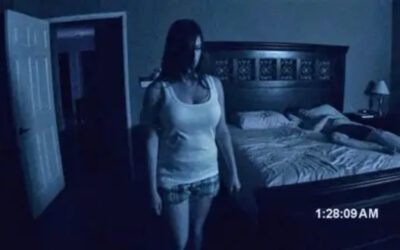Halloween is easily one of the best holidays—a night filled with candy, costumes, and classic horror movie marathons. But have you ever wondered where all the spooky traditions actually came from? The history of October 31st is a fascinating tale, woven together from two distinct ancient festivals: the pagan Celtic festival of Samhain and the Christian observance of All Saints’ Day.
The Celtic Roots: Samhain (Summer’s End)
The holiday’s roots stretch back over 2,000 years to the ancient Celts of Britain and Ireland. They celebrated Samhain (pronounced Sow-en), which translates literally to “Summer’s End.” This wasn’t just an end-of-harvest festival; it was considered the year’s most significant marker, celebrating the close of the warm, fruitful season and the start of the dark, cold winter. The Celts also treated November 1st as the beginning of their New Year.
The belief at the heart of Samhain was that the night before the New Year—October 31st—the veil between the world of the living and the world of the dead was at its thinnest. On this night, it was believed that the deceased returned as ghosts and spirits.
During the celebration:
- Bonfires and Sacrifices: Massive bonfires were lit. People gathered, danced around the fires, and made sacrifices to honor their Celtic deities, ensuring the fertility and protection of their lands and livestock.
- Costumes and Masks: People donned costumes and masks. This was done partly as a disguise to fool any returning evil spirits into thinking the living person was one of them, allowing them to move safely through the night.
- Protection and Offerings: After the communal festival, each family took a piece of lit wood or coal home from the bonfire to rekindle their own hearth fire, symbolizing life and protection through the winter. They also left offerings of food and wine outside their doors, hoping to appease the restless spirits and prevent them from entering or haunting the family’s home.
The Christian Counterpart: All Saints’ Day
Centuries later, the early Christian church sought to replace or absorb pagan traditions to make conversion easier. By the 8th century, Roman Catholics were celebrating a day to honor the church’s saints, initially called All Saints’ Day.
Pope Gregory III eventually moved this observance to November 1st in the mid-eighth century. His deliberate reason was to align the Christian holiday with the existing, deeply rooted pagan festivals like Samhain, making it easier to convert the “pesky pagans.”
The night before, October 31st, became known as All Hallows’ Eve (“Hallow” being an old term for “saint”), a night meant to be a celebration of family, the harvest, and to honor those who had passed away during the year.
The Blending of Traditions: How Halloween Was Born
Over the past few hundred years, these two holidays merged, and the superstitions of Samhain became central to All Hallows’ Eve, which eventually evolved into the name we use today: Halloween.
- Carving and Lighting: The ancient practice of lighting fires to ward off evil morphed into the tradition of carving lanterns. Initially, people carved large turnips (which, let’s be honest, looked pretty creepy to begin with!) and lit them with candles to drive away evil spirits. Thankfully, in America, the much more manageable and aesthetically pleasing pumpkin took over this duty.
- Trick-or-Treating: The tradition of people dressing as spirits to fool entities, combined with the practice of the poor going door-to-door to beg for food or money (in exchange for prayers for the dead), gradually developed into trick-or-treating. The “trick” was the implicit threat—or mischief—if you weren’t generous with your offerings.
Today, many of us recognize Halloween primarily as a fun night for trick-or-treating, parties, costume contests, and movie marathons featuring classic monsters like Michael Myers. While we embrace the modern fun, it’s fascinating to remember that every time we put on a costume or light a jack-o’-lantern, we are participating in rituals that began with ancient Celts over two millennia ago.














